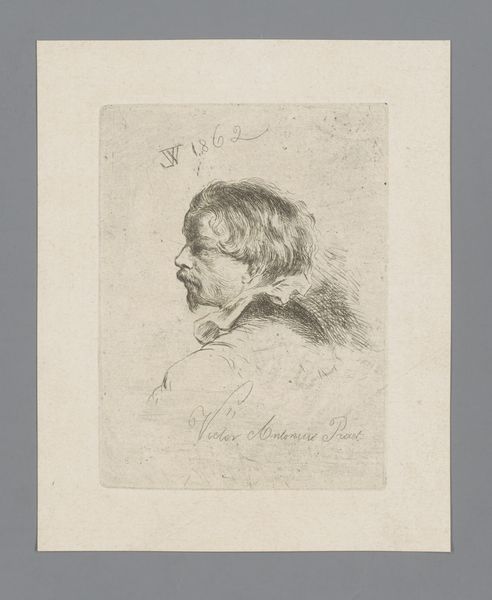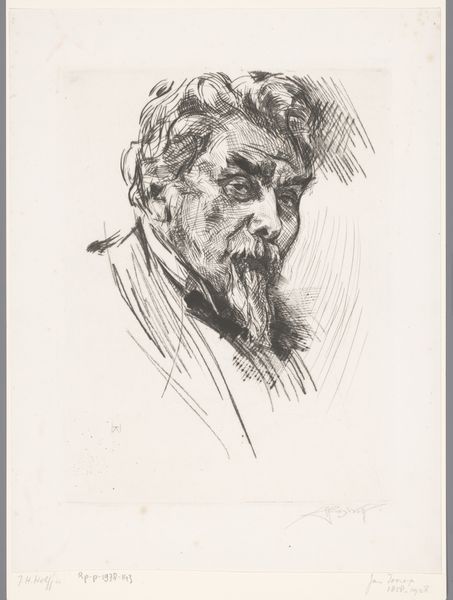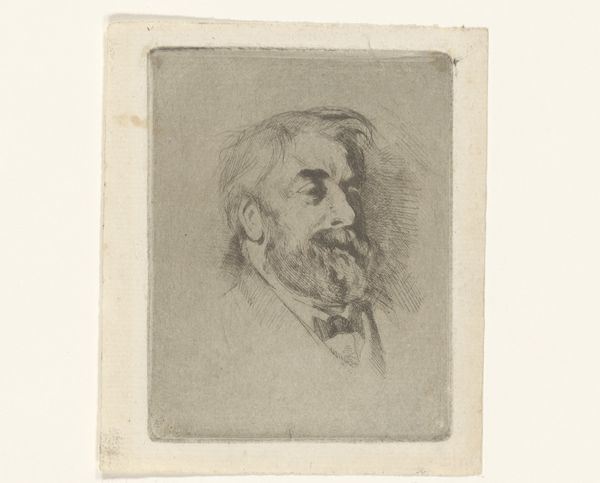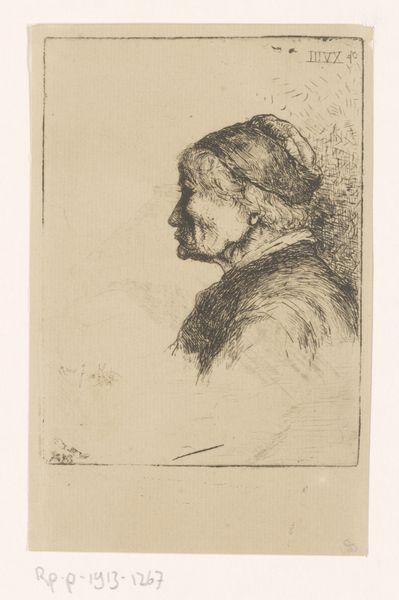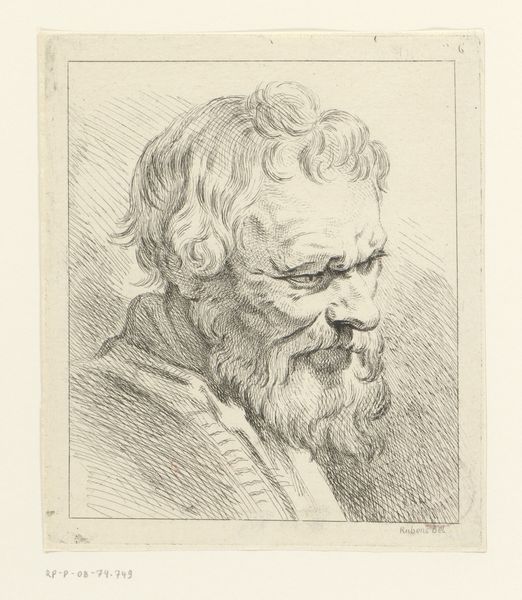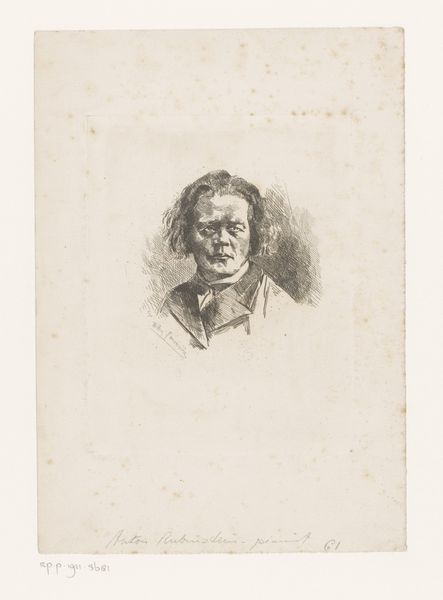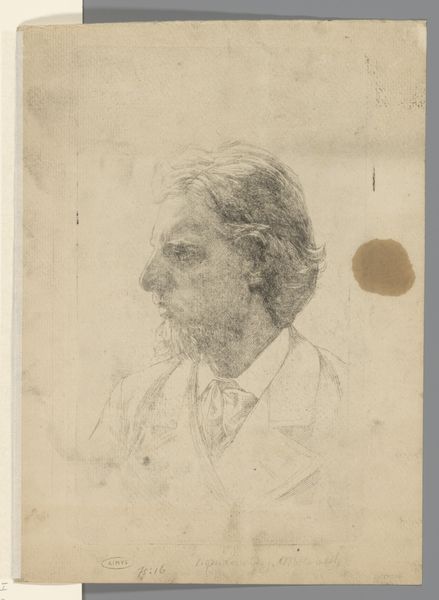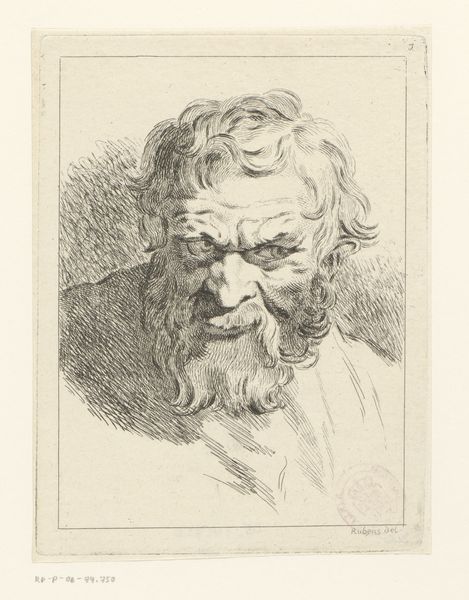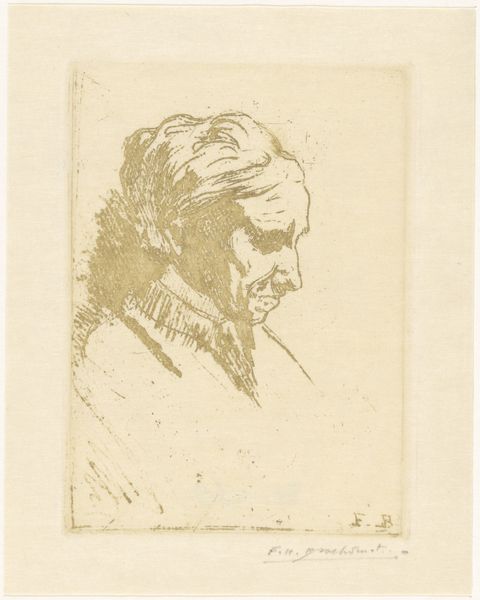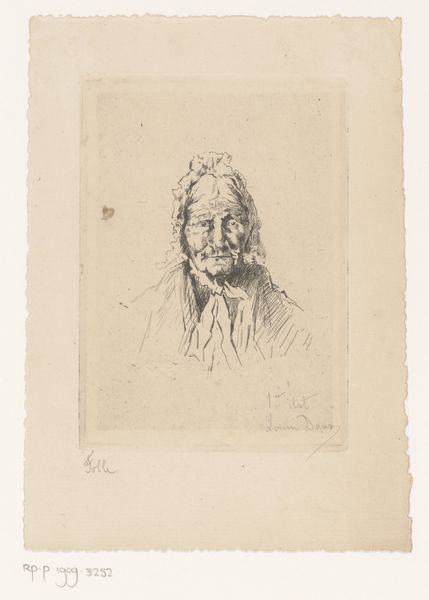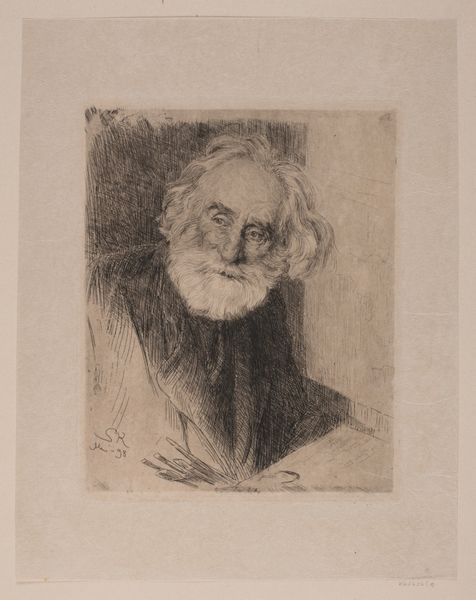
etching
#
portrait
#
etching
#
realism
Dimensions: height 96 mm, width 72 mm
Copyright: Rijks Museum: Open Domain
Curator: This etching, created in 1862 by Willem Linnig the Younger, is called "Portret van een onbekende man" or, "Portrait of an Unknown Man". It resides here in the Rijksmuseum collection. Editor: There's something very direct about this image. It’s small, but the subject's gaze is powerful, confronting the viewer. I immediately want to know this man’s story. Curator: The realistic rendering is striking, isn’t it? The way Linnig uses etching to capture the texture of the man's hair and beard is particularly impressive, almost photographic in its detail. It’s like looking at a tangible, historical document. Editor: I see the realism, certainly. But to me it transcends a mere record. There’s an inner world being hinted at – something of stoicism, maybe even a touch of defiance in his downturned lips and squinting eyes. Think about the cultural position of the unknown man. Was it meant to bring honor to common people by painting a realistic portrait of them? Curator: That's a valid point. Consider, too, the symbolism inherent in portraits. Throughout history, portraits have been a way to memorialize, to assert power, or to preserve identity. The act of etching, as a medium, could carry a particular significance within that time— perhaps democratizing image production. It creates wider distribution compared to unique paintings. Editor: I agree with that; his 'unknowability' is central. Whose stories were typically omitted or underrepresented? It’s a radical act in itself to give him this degree of visibility in 1862, even if unnamed. His story probably wasn’t usually deemed important. Curator: This man stands outside typical hierarchies, offering an image of resilience perhaps even nobility outside the traditionally celebrated societal strata. It gives this ordinary man recognition that most others in society wouldn't get. Editor: It’s intriguing how Linnig makes a political statement simply through depiction. He’s granting importance, dignity, to someone likely overlooked by official histories. It creates value out of the quotidian. Curator: Yes, I appreciate your perspectives on the socio-political dimension! I was stuck in a loop wondering why the man looks slightly miserable. Editor: Well, in a way it becomes an icon of broader, less visible segments of society. Food for thought as we stroll onwards!
Comments
No comments
Be the first to comment and join the conversation on the ultimate creative platform.
